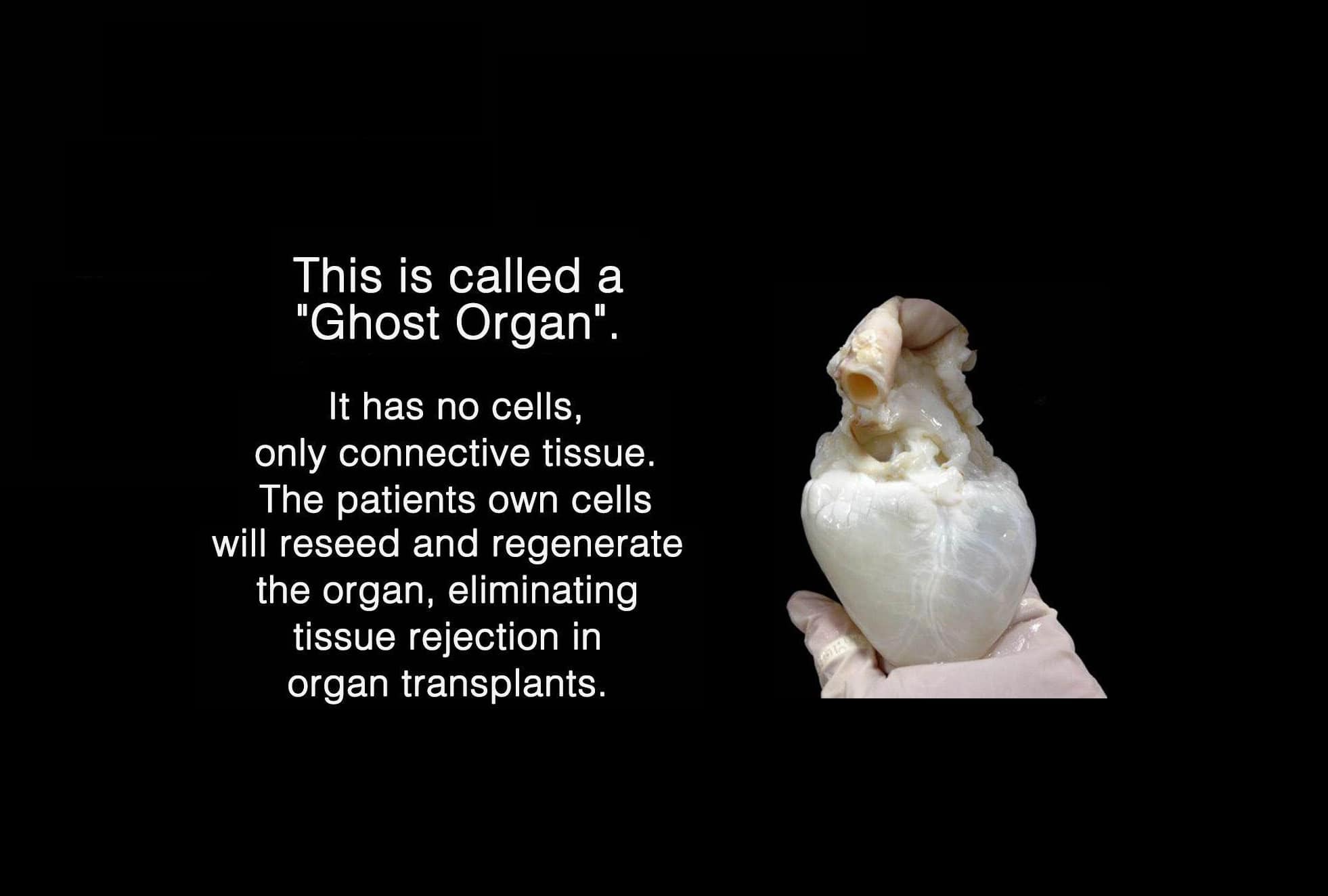When you have a disease that requires you to have an organ transplant, why wait on a donor list when you can make the organ that you need? With the new ghost organs that are being created in the lab, the risk of rejection is eliminated for transplant patients.
Scientific discoveries can be scary, and the implications for possible misuse of this new technology have been compared to Dr. Frankenstein making a person from parts. Scientists have no plans to create new humans. They just want to use this technology to help people live longer, healthier lives.
The Reality of the Organ Transplant Wait List
Kidneys, livers and hearts are the 3 most needed organs for patients on organ donation wait lists. A living, breathing person can donate one of their two kidneys and continue living a normal life. A living donor can also donate a part of their liver.
Currently, around 100,000 people are waiting for kidney donations and over 17,000 are waiting for a donor liver. Hearts on the other hand mean that a person has to be 3 things: a registered organ donor, deceased, and a match for the person on the wait list.
The U.S. Department of Health and Human Services says that an estimated 22 people die each day waiting for donor organs. There are an estimated 3500 people in the United States alone waiting for donated hearts. Candidates for transplants can wait anywhere from days to years for an organ to become available.
Donated hearts are rare because the failure of the heart from disease or damage is often a cause of death so these organs cannot be donated. Currently, more than 120 million people in the U.S. are on the organ donor registry. You can register to become a donor through this link.
Scientists May Be Able To Grow Organs For People Who Need Transplants
Stem cells extracted from embryos are cells that haven’t been given a function yet. They can be made to grow into any bodily cell when scientists prompt them to develop with cellular material for the cell type that they need. In the lab, scientists have been able to make heart muscle cells that were created from stem cells beat to a rhythm when they are given electrical stimulation.
Bioengineered ghost organs use the protein structure from a donor heart that is sterile to create a shell. The donor heart can be from a human or an animal. Pig hearts are the most similar in size and structure to human hearts.
The scientists remove all of the existing cells from the donor heart, which leaves behind an empty, white, ghostly shell organ. They then use cells from the person who will receive the transplant to grow heart tissue which is a biological match to the recipient.
However, an adult does not have embryonic stem cells to use to create the cells for the donor tissue. So researchers have to use adult cells that are then reprogrammed to mimic embryonic stem cells by using growth hormones.
Tracheas and bladders are easier to build than kidneys or lungs. This is because of the different cell types that make up our more complex organs. Organs have to be grown correctly and blood vessels need to be developed to keep them alive until they can be transplanted.
Imagine a child who needs a heart transplant. The heart has to be the right size for the child now, but also grow with them as they grow into adulthood. The same would be true for anyone who is not fully grown, for example teenagers.
Not only does the engineered ghost organ have to stay sterile, the scientists have to keep it healthy by artificially pumping fluid through it with the rhythm of a heart beat. Then they have to delicately transplant it into the recipient and keep it beating for the lifespan of that person.
Stem Cell Controversy
The use of human embryos for stem cell research has caused controversy due to the need for fertilized eggs in the research. Beliefs regarding conception, the ethical treatment of human life, religious traditions, and the morals of society are all factors to be considered when pursuing this research.
In order to ethically obtain stem cells for research, scientists use eggs that have been fertilized by artificial means and that are voluntarily donated by couples who did not use them for their fertility treatments. Scientists remove the inner cells from the embryos which prevents them from developing.
Some people support the rights of the fertilized embryo, while others support the rights of the couple who produced the embryo. Still others support the importance of furthering scientific discovery to save lives. These are the ethical issues regarding stem cell use that remain contentious.
When Will Ghost Hearts be Available?
So far, researchers developing ghost organs have had limited success with animal studies in rats. Lung, kidney and heart trials have been undertaken but all had significant problems. For hearts, the ability to pump a large volume of blood for a long period of time seems to be the most difficult challenge.
In the meantime, the focus on research is on rebuilding partial organ structures. This technology could be used to repair a heart valve defect rather than replacing the entire heart. One researcher estimates 5-7 years before a person would be ready to receive a partial ghost organ transplant.














